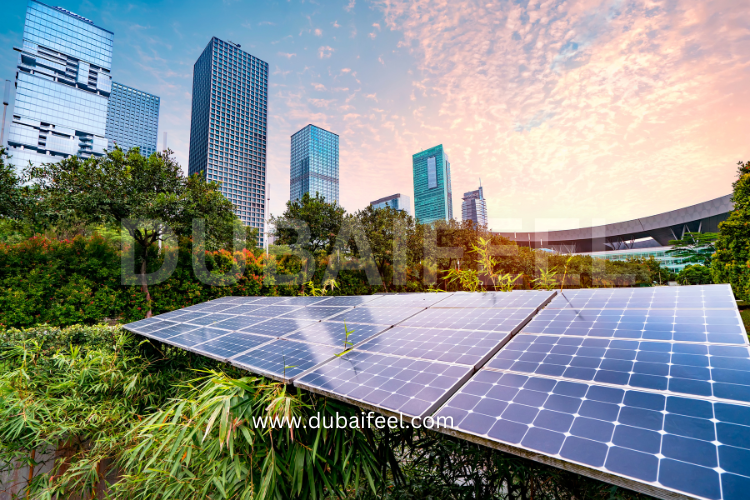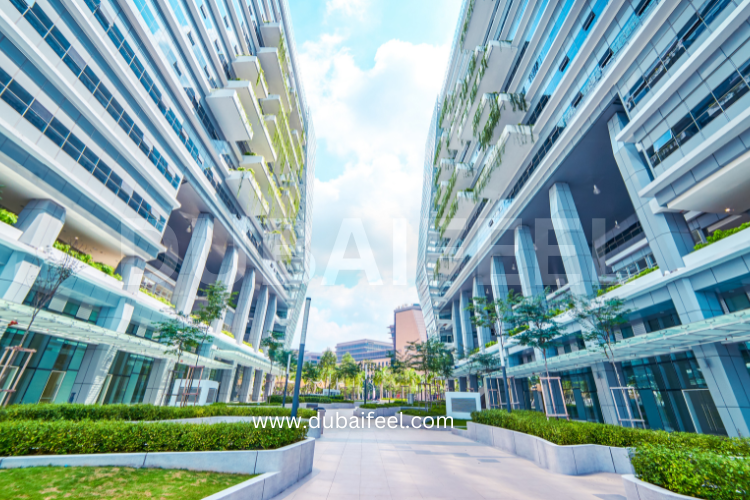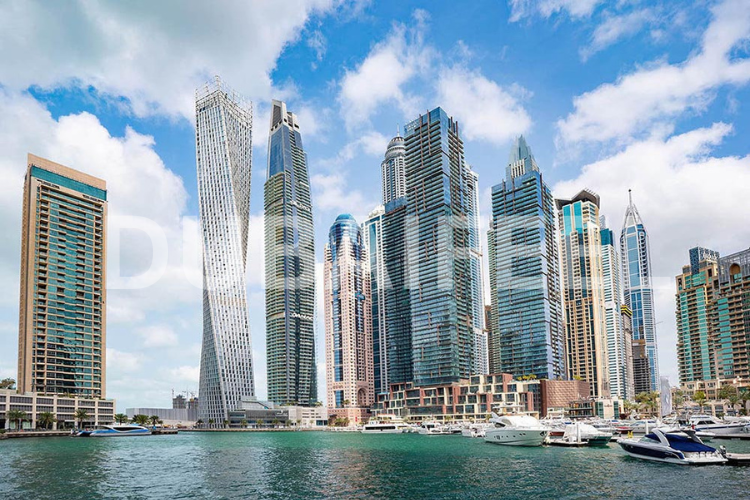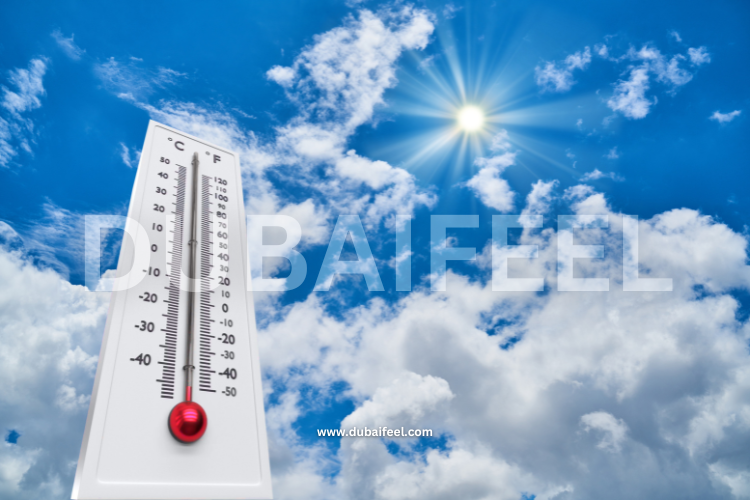Living in Dubai offers several positive perspectives on its climate for long-term residents. The warm weather encourages year-round outdoor activities, promoting an active lifestyle. Abundant sunshine enhances mood and energy levels, while the vibrant café culture makes social interactions enjoyable. Additionally, the hot climate drives innovation in architecture and sustainability, leading to energy-efficient solutions. Adapting to these conditions fosters resilience and adaptability, valuable traits in personal and professional life, creating a dynamic and enriching environment for residents.
Dubai, marked golden for its fun adventures and luxurious residents, faces climate problems. This issue prevents visitors and citizens from relishing Dubai’s glamour in Summer. Dubai is facing this environmental challenge due to its scorching climate. The city, famous for its towering skyscrapers and innovative creations, is now drawing attention for its extreme climate, which poses significant health risks, including skin burns and eye problems. Dubai’s weather is characterized by its extreme and relentless heat, especially in the summer months when temperatures frequently soar beyond.
This extreme heat presents numerous challenges, especially for long-term residents who must adapt daily to cope with the intense climate. The soaring temperatures limit outdoor activities and pose significant health risks, affecting physical and mental well-being. Understanding the impact of Dubai’s climate on residents is crucial for those considering long-term stays in this vibrant city. Dubai features a dry climate characterized by low rainfall and intense sunlight for the majority of the year.
Summers, generally spanning from May to October, are brutal, with temperatures often exceeding 40°C. The heat index, factoring in humidity, can make the temperatures feel even more oppressive. These extreme conditions force residents to restrict outdoor activities during the day, leading to a more inactive lifestyle, particularly in the summer.
A significant concern for long-term residents is the effect of this intense heat on their health. Heatstroke is particularly dangerous, as it occurs when the body’s temperature regulation system fails, causing the core temperature to rise to unsafe levels. Symptoms include confusion, dizziness, rapid heartbeat, and, in severe cases, unconsciousness. If not treated promptly, heatstroke can be fatal.
The extreme heat of Dubai’s climate significantly affects daily life for long-term residents. People often restrict outdoor activities to early mornings or late evenings when temperatures are slightly more relaxed. During the day, engaging in physical activities outside without risking heat-related illnesses becomes nearly impossible. This limitation forces many residents to adopt indoor lifestyles, relying on air-conditioned environments for work, leisure, and exercise.
While Dubai offers numerous indoor attractions, such as shopping malls, fitness centers, and entertainment venues, the lack of outdoor engagement can affect mental health, leading to feelings of isolation or cabin fever. Another consequence of Dubai’s climate is the heavy dependence on air conditioning to maintain habitable living conditions. The constant use of cooling systems leads to higher energy consumption, which can significantly increase utility bills for residents.
This increased energy use also raises concerns about sustainability and the environmental impact of carbon emissions. Finding ways to balance comfort with ecological responsibility is a growing challenge for long-term residents and city planners alike in a city that already consumes large amounts of energy. While Dubai’s extreme climate may seem daunting, long-term residents have found ways to adapt and mitigate its effects.
They often modify their routines to avoid the hottest parts of the day, stay well-hydrated, and ensure that their residences are well-insulated to reduce reliance on air conditioning. Wearing loose-fitting, lightweight clothing made of breathable materials can also help the body stay cool. For those who enjoy outdoor activities, early morning or late evening excursions are the best options to avoid the extreme heat.
These lifestyle adjustments are crucial for coping with Dubai’s climate. Dubai’s climate, characterized by extreme heat, presents significant challenges for long-term residents. The impact of this intense heat is far-reaching, from health risks like heatstroke and dehydration to limitations on outdoor activities and increased energy consumption. However, it’s important to note that with careful planning and lifestyle adjustments, living comfortably in this unique environment is possible and achievable.
Also read : 6 Ways Recent Environmental Policies Are Impacting Dubai’s Development Projects
1. Limited Outdoor Time: How Dubai’s Climate Impacts Daily Life

The weather in Dubai, with its scorching heat and high temperatures, significantly impacts people’s daily lives. The intense heat, especially in the sweltering summer months, forces many people to spend much time indoors. Although necessary for comfort, this reliance on air conditioning has several adverse effects that can affect physical and mental health.
Dubai’s harsh climate, marked by frequent high temperatures, makes outdoor activities difficult and occasionally dangerous. The intense heat means that residents often avoid outdoor exercise, socializing, and leisure activities during the hottest parts of the day. Instead, they retreat indoors, seeking refuge in air-conditioned environments such as shopping malls, gyms, and homes.
This shift from outdoor to indoor living can have significant consequences. For one, it limits opportunities for physical exercise. The climate’s impact extends beyond physical health, affecting social and leisure activities. The extreme heat often restricts social interactions, as people are less likely to engage in outdoor gatherings, events, or casual meet-ups. This limitation can lead to a more sedentary lifestyle, which might contribute to feelings of isolation or loneliness.
The lack of outdoor socializing opportunities can affect mental well-being, making residents feel disconnected from their communities and less engaged in social life.
Moreover, Dubai’s climate can reduce the enjoyment of leisure activities that rely on outdoor environments. Beaches, parks, and outdoor cafes, popular attractions in other parts of the world, become less appealing during the hottest months.
This reduction in recreational options can lead to a diminished quality of life, as residents have fewer enjoyable activities to look forward to. Dubai residents heavily depend on air conditioning to cope with the oppressive heat. While this technology provides necessary relief and helps maintain comfortable indoor environments, it also comes with challenges. This reliance on cooling systems also raises concerns about environmental sustainability, as higher energy use contributes to more significant carbon emissions.
Additionally, excessive reliance on air conditioning can lead to health problems like dry skin, respiratory problems, and discomfort due to sudden temperature changes when moving indoors and outdoors. Managing these effects requires careful adjustment to maintain comfort and health. Despite the challenges posed by Dubai’s extreme climate, residents can take steps to adapt and mitigate its impact.
To address physical health concerns, individuals might focus on indoor exercise options or engage in activities during more excellent parts of the day, such as early mornings or late evenings. Socially, residents can explore indoor social venues or plan gatherings that accommodate the climate.
Dubai’s climate significantly affects the daily lives of its residents, compelling many to spend more time indoors and rely on air conditioning. By understanding the influence of Dubai’s climate and taking proactive measures, residents can better navigate the challenges and maintain a high quality of life despite the extreme heat.
These proactive measures can include adjusting daily routines to avoid the hottest parts of the day, exploring indoor exercise options, and planning social gatherings that accommodate the climate. By taking these steps, residents can adapt to the extreme climate and mitigate its impact on their daily lives.
2. Energy Consumption: The Impact of Dubai’s Climate on Living Costs and Sustainability

With its extreme heat and intense temperatures, Dubai’s climate is not just a local phenomenon but a global issue that urgently needs attention. The relentless high temperatures necessitate constant air conditioning, which has become crucial for maintaining comfort indoors.
However, this dependence on cooling systems significantly impacts living costs and environmental sustainability. The climate in Dubai during the sweltering summer months, when temperatures frequently exceed, creates an environment where air conditioning is not merely a luxury but a necessity.
The intense heat drives residents to consistently keep their homes and workplaces cool, leading to heavy reliance on cooling systems. This constant demand for air conditioning results in high energy consumption, significantly impacting utility bills for residents.
Energy consumption in Dubai skyrockets during the hotter months, with air conditioning systems consuming a substantial portion of household energy. This increased usage translates to higher living costs, as cooling expenses become a significant component of monthly utility bills. For many residents, the financial strain of these elevated costs is a considerable concern, particularly for those on fixed or lower incomes.
The heavy reliance on air conditioning affects individual finances and raises broader environmental concerns. The cooling systems that residents depend on use electricity generated from fossil fuels, which exacerbates the city’s carbon footprint and contributes to global warming. Increased energy consumption further exacerbates climate issues, posing sustainability and environmental stewardship challenges.
In response to the challenges posed by Dubai’s climate, there are ongoing efforts to address the environmental impact of energy consumption. The city is investing in sustainable energy solutions and promoting energy efficiency measures to reduce reliance on traditional cooling systems. However, the role of residents is equally crucial.
They can make a significant difference by taking personal steps to mitigate the effects of high energy consumption due to Dubai’s climate. Simple measures such as using fans in conjunction with air conditioning, ensuring proper insulation in homes, and setting thermostats to a higher, but still comfortable, temperature can help reduce energy use.
Additionally, incorporating energy-efficient appliances and participating in conservation practices can lower energy consumption and reduce utility costs. With its extreme heat, Dubai’s climate drives high energy consumption due to the constant need for air conditioning. This dependence on cooling systems increases living costs and raises significant environmental and sustainability concerns. By understanding the connection between Dubai’s climate and energy consumption, residents and policymakers can work together to find solutions that address financial and environmental challenges, striving for a balance that supports a comfortable and sustainable living environment.
3. Air Quality: How Dubai’s Climate Affects Respiratory Health

Dubai’s climate is crucial in shaping the city’s air quality. Ground-level ozone can cause respiratory problems and aggravate conditions such as asthma, making it a significant concern for residents. Dust storms, another frequent occurrence in Dubai’s climate, negatively impact air quality.
The arid environment and strong winds can lift dust and sand into the atmosphere. The high traffic volume in Dubai further compounds the issue of poor air quality. Vehicle emissions, which include pollutants such as nitrogen oxides (NOx) and particulate matter (PM), contribute significantly to the degradation of air quality. Combining these emissions with the city’s climate conditions exacerbates smog formation and increases the concentration of harmful pollutants in the air.
During the hotter months, when air conditioning use is at its peak, the increased energy demand often leads to higher emissions from power plants, further worsening air quality. It is particularly concerning in densely populated areas where the accumulation of pollutants can create unhealthy air quality levels. The deterioration of air quality in Dubai due to its climate directly affects respiratory health. Those with allergies may experience heightened symptoms, such as nasal congestion and itchy eyes, as airborne allergens become concentrated. It can also contribute to cardiovascular problems and negatively impact overall quality of life.
Enhancing public awareness about the effects of air pollution and encouraging practices that reduce emissions can contribute to better air quality. It is more than just a problem for policymakers and environmental health professionals. It’s a call to action for every resident of Dubai. Promoting public transportation, reducing reliance on fossil fuels, and implementing stricter vehicle emissions standards can help decrease pollution.
Urban planning initiatives that reduce traffic congestion and incorporate sustainable energy solutions can also significantly address air quality issues. Dubai’s climate, characterized by extreme heat, dust storms, and vehicle emissions, poses significant challenges to air quality. But with our collective understanding and action, we can work towards solutions that protect public health and improve living conditions in this dynamic city.
4. Humidity and Discomfort: The Effects of Dubai’s Climate on Comfort Levels

With its coastal location and arid surroundings, Dubai’s climate presents unique challenges regarding humidity and overall discomfort. Particularly during the summer, the high humidity levels experienced in coastal areas significantly impact residents’ comfort and well-being. However, with their resilience and adaptability, the residents of Dubai have found ways to cope with these challenges.
The combination of intense heat and elevated humidity levels creates an environment where the body’s natural cooling mechanisms become less effective, leading to increased discomfort and potential health concerns. Dubai’s coastal climate means residents frequently experience high humidity, especially during the peak summer months. Humidity in coastal areas often exceeds 70%, making the air feel thick and heavy.
This high humidity results from the evaporation of seawater from the Persian Gulf, which is then carried inland by prevailing winds. The moisture in the air intensifies the effects of the already high temperatures, creating an environment where discomfort levels rise significantly.
The combination of heat and humidity in Dubai’s climate creates unique challenges for residents. When the air is moist, the body’s primary cooling mechanism—sweating—becomes less effective.
Usually, sweat evaporates from the skin, which helps to lower body temperature. However, the evaporation rate slows significantly in a highly humid environment. As a result, the body struggles to cool down, leading to a feeling of persistent heat and stickiness. This situation can make daily activities more uncomfortable and strenuous.
Outdoor exercise becomes increasingly complex, as the high humidity levels can lead to rapid dehydration and heat exhaustion. Even routine tasks like walking or running errands can become challenging as individuals feel the oppressive combination of heat and humidity.
Moreover, high humidity can exacerbate respiratory issues, particularly for individuals with asthma or other respiratory conditions. The moist air can increase mold and mildew growth, triggering allergic reactions and respiratory distress. For individuals with sensitive skin, excessive moisture can lead to skin conditions such as heat rash or fungal infections.
Residents often adopt various strategies to manage the discomfort caused by Dubai’s humid climate. Maintaining proper hydration is essential to combat the impacts of heat and humidity. Air conditioning and dehumidifiers generally ensure that indoor spaces remain cool and dry.––
By understanding the unique challenges posed by Dubai’s climate, particularly its high humidity and extreme heat, residents can take proactive steps to manage their comfort and well-being. Combining these factors impairs the body’s natural cooling mechanisms, increasing discomfort and potential health risks. However, armed with knowledge about the impact of Dubai’s climate on humidity and adopting appropriate measures to manage its effects, residents can improve their quality of life and maintain comfort despite the challenging weather conditions.
5. Water Scarcity: The Impact of Dubai’s Climate on Water Resources

Dubai’s desert climate presents significant challenges regarding water scarcity. While desalination effectively addresses immediate water needs, it raises concerns about sustainability and long-term water security. The climate in Dubai necessitates the continuous operation of desalination plants, which require substantial energy resources.
This reliance on energy-intensive processes increases operational costs and contributes to the city’s carbon footprint.
Moreover, desalination’s environmental impact, including brine’s discharge into the sea, can affect marine ecosystems. As Dubai’s climate challenges traditional water sources, sustainable water management practices are becoming increasingly critical. Balancing water consumption with environmental concerns remains crucial in ensuring the long-term security of water resources in this desert climate.

